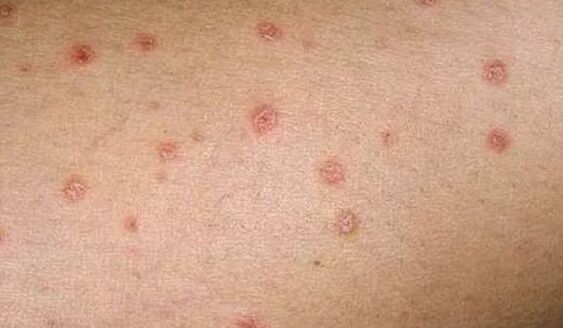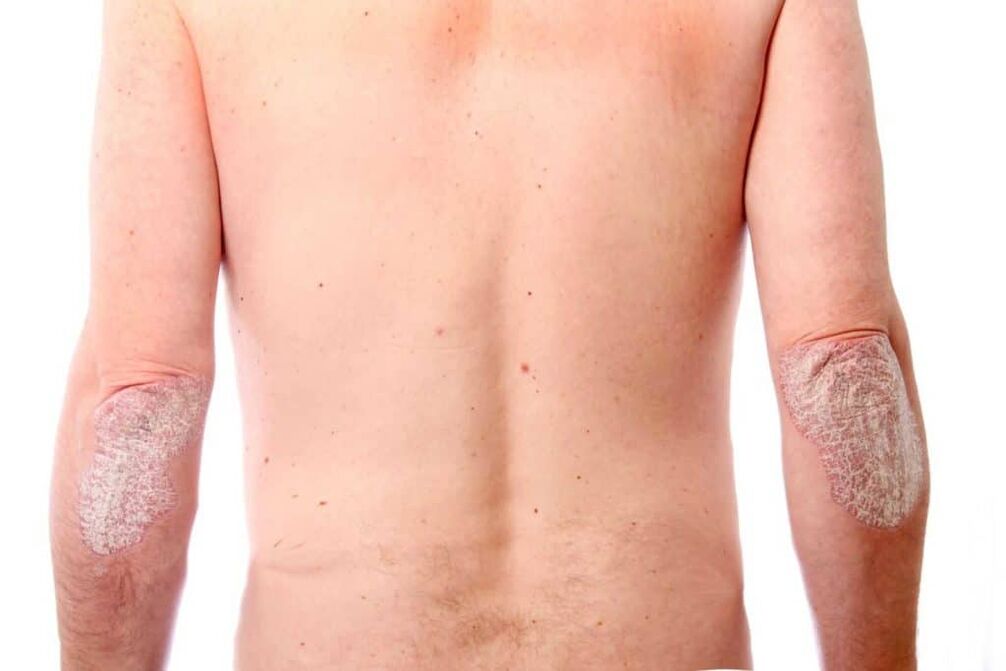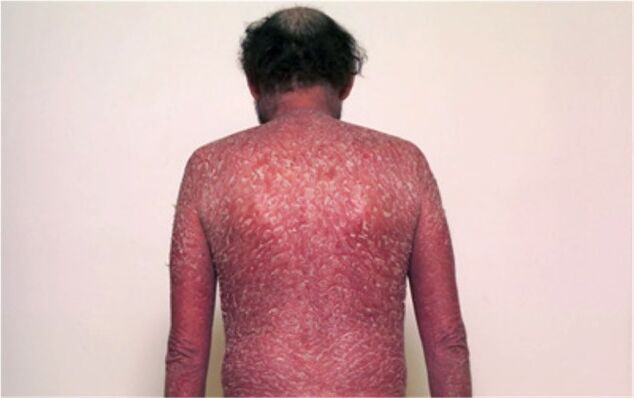Psoriasis is one of the most common chronic skin diseases in the world and the problem of treatment still remains urgent.According to statistics, for 2017, 130 ml of cases are recorded in the world: every twenty -third resident of the planet suffers from a disease.Generally, the pathology debuts drops from 16 to 20 and from 40 to 60 years.In 65% of the sick, it is observed in a slight shape and the surface of the skin is slightly influenced by the plates (up to 3%).The average degree of psoriasis suffers 25% (up to 10% of the skin area) and severe, in which it is influenced over 10% of the surface - 8%.

The exact cause of the disease has not yet been studied.It is assumed that a parasitic infection, an allergic predisposition, a hormonal imbalance, metabolic disorders and heredity can cause the appearance of psoriatic plaques.
The tendency to develop psoriasis during childhood, if one of the parents is sick, is 25%.When both - probability increases to 50%.According to statistics, out of 100 children in the world, 4 of them are psoriasis and disturbing cases in boys, less often than girls of 25%.
The list of adverse factors also includes subjected to infectious diseases, neuropsychic lesions and the negative effect of low temperatures.
Following the interaction of different external and internal causes, there is a violation of the blood circulation of the papillary layer of the dermis, from which the reproduction of young and insufficient and insufficient epidermal cells occur so quickly that they do not have time to mature, finally accumulate on the surface with white stairs in silver in the shape of a drop shape.
The disease is progressing that over time they merge and transform into large points.
Psoriasis lasts all life and cases of cars -questation is single.The periods of remission alternate with exacerbation, which is observed more often in autumn-winter time.But there are indefinite (all -stage) and photosensitive (summer) cases.
Phases
In the pathological process in psoriasis, different periods and the course similar to waves take place with the alternation of exacerbation and remission cycles.For a specialist, the diagnosis of the disease is not difficult: it has special and specific symptoms and a characteristic type of skin in different stages of the development of the pathology.
The initial phase
Initially, when the disease is just starting to appear, eruptions (papules) appear of the size of no more than a stiletto head. In psoriasis, they are grouped on the skin of the curves of the limbs and initially do not progress and do not change.These plates so called (dice).

Classic clinical manifestations in the initial phase form a triad of psoriasis:
- Wax point.Papules are covered with white plate with a grayish color of plaque, loose and scarcely fixed.It can be easily scraped by a spatula.The externally exfoliated stairs resemble the smallest stirin chips - substances for the production of candles.
- Terminal film.A smooth, shiny and juicy hyperemic surface is visible under a loose raid.This is the last layer of cells that can leave.
- Bloody Dew is the final sign of the triad.It is formed when the terminal film is damaged and manifests itself externally in the form of condensation by small drops of blood, which do not merge together.
Psoriasis is a chronic disease and it is impossible to recover completely.The main task of the treatment is to obtain a persistent and prolonged remission.From the inadequate therapy of exacerbation, every two or three months.The treatment in the initial phase of psoriasis is delicate and begins with the use of cheratoolithic external products in the form of ointments and creams based on salicylic and lactic acid.
The drugs eliminate discomfort, suppress excessive cellular formation, relieves inflammation and peeling.Over time psoriasis becomes resistant (stable) to the action of some drugs.Therefore, the medicinal program is reviewed after a certain period of time.This approach is called rotation - a periodic change in the techniques that goes to the circle.
Progressive phase
The second stage of the disease is the royal peak of exacerbation.

THE FIRST SIGN - The peeling is found only in the central part of the papules and a pink whisk remains along the edges.This is a symptom of growth, when individual rashes increase and merge.The second sign of progression becomes a symptom of the skin reaction: 10-14 days after injuries (abrasions, scratches) of the skin, a new typical plaque appears.Progressive psoriasis provides another symptom that is not observed in other phases: it is itching with different intensity.The processing of the progressive phase of psoriasis is carried out in the hospital and includes:
- Drugs: antihistamines, anti -anti -inflammatory drugs non -pound, immunostimulants, vitamins.
- Physiotherapy: Puva, Ufo, application with paraffin baths, sulphide and radon.
After patients, treatment with sanatorium-resort is recommended.In particularly serious cases, corticosteroid and cytostatic agents are prescribed.Psoriasis affects the nail plates.They become fragile, boring, they get up the bed.Generally, this condition with a disease also occurs from minor damage.
Stationary stadium
After the progression, towards the end of the fourth week, the healing of the papules occurs.Start from the center to the outskirts and the plates acquire a characteristic form of ring.Their color becomes less intense, new formations appear.The stationary phase of psoriasis does not give a special discomfort.The patient is not painful, there is no itching.The therapeutic program remains the same.There may only be small adjustments that pursue a goal: to give the opportunity to enter the final phase and not turn into the progressive phase of psoriasis.

Folk internship
After complex and intensive care, remission occurs and the disease is included in the hidden phase.In the final phase, psoriasis peeling disappears, the plates acquire a pale shade.They resolve gradually and merge with the skin.An exception: the "frozen" dads so called remain on the elbows, knees, stomach and buttocks.The remission period is individual and can last from three months to several years.A patient with psoriasis should monitor himself and the first signs of exacerbation to see a doctor and undergo a treatment course.Despite the chronic disease subject to recurrence, without prejudice to all recommendations, psoriasis allows you to live an ordinary and rich life.
























